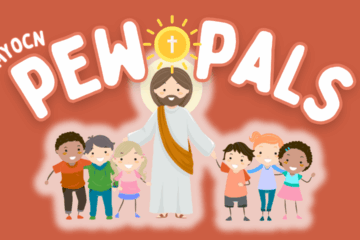Metropolitan Ieronymos of Larisa and Tyrnavos
Whatever corner of the planet you turn to, your gaze will be met with pain, sorrow and bitterness. These in turn generate callousness, depression and pessimism. People have forgotten joy, or rather, as with so many other things, they’ve forgotten to live while at the same time thinking about, analyzing and understanding their life. But they feel and experience the great void left by the absence of joy, to the point where they believe this absence is the sole experience of life, the only truth, the pervasive reality. They can’t live beyond the point to which they’ve become accustomed and so they don’t recognize joy even when they encounter it. Or rather they overlook it because they don’t believe in its tangible existence.
We’ve learned to live with pain as if it’s something completely natural. We’ve wept so much that the sufferings of others, no matter how intensely and expressively they’re recorded, are no more to us than yet more television footage which we might feel is worthy of comment or commendation for its artistry. The truth is that people in the 21st century have plenty of cause for feeling embittered, limitless opportunities to be sad, and reasons without number to grieve. But it’s equally true that they also find ample opportunity to wallow in self-pity, finding cause for complaint where there is none, and being possessed of the sense of being permanently offended. Add to this the feeling of unfulfillment which- despite the various achievements of our civilization- manipulates people as glove-puppets of denial, rejection and indifference…
Christ abolishes death
In Nain, a town of little importance in Judea, a scene was playing out which was common enough in those days. A young man had died and, as usual at the funeral of a young person, a large crowd was following the cortege. The tragedy in this instance lay in the fact that the young man was the beloved only son of a widow who after his demise was alone and, perhaps, unprotected in life. So this woman had very good reason for weeping copiously, both over her son and for herself. She may have been the only person there weeping genuine tears since at such events, social convention, respectability and common politeness demand behavior which isn’t always sincere. This behavior is always external, perhaps even superficial; it’s replete with sentimentality but always has its bounds and limitations. A lot of people, perhaps psychologically on the defensive, invoke the fact that ‘life goes on’ and lose no time in forgetting whatever trouble has befallen others. Trapped in their egocentric view of the world, they try to ‘purge’ the ‘evil’, lest the same fate comes upon them. Not many people can really provide support by making the pain of others their own and genuinely suffering with them.
When the funeral cortege was on its way to the cemetery, a man they didn’t know stopped and, addressing the mother, told her in an authoritative tone not to weep. Who’d invited him? Nobody. Of his own volition our only most merciful Lord had arrived at the place where the woman he created was suffering, in order to alleviate her pain. It’s worth noting that he addressed only the widowed mother of the dead man. All around, other people were weeping. But Christ told her alone to stop, probably because she alone was really crying, since she felt the pain in the depths of her soul. And he didn’t tell her to stop crying in order to give her words of comfort, but in order to perform the unhoped for miracle: to raise her son from the dead and to turn her pain into unrestrained joy and relief.
The Gospel doesn’t tell us what happens thereafter. Beyond noting that he gave the man back to his mother and apart from the impressions formed throughout Judea and its surrounding lands, it doesn’t record any acts of gratitude on the part of the mother and her son towards Christ. It presents the miracle of the raising of the son of the widow of Nain as the elimination of the pain of the grief-stricken woman.
The abolition of pain
If the raising of Jairus’ daughter was performed to manifest Christ to us as the victor over death; if the raising of Lazarus occurred so that we’d recognized the Lord as victor over decay; the raising of the only son of the widow of Nain happened to show Christ as the remover of pain, the underlying cause of its abolition, the redemptive therapeutic for overcoming it. Christ went to Nain and performed the miracle purely and simply in order to send the message to the world, to each one of us, that pain is a reversible condition. It may appear to be a wild beast about to savage people, but in reality it’s already been conquered and defeated by the redeemer of the human race.
The abiding mistake of humanity is that we refuse to have recourse to Christ as the eliminator of pain and the bestower of joy. Yet, when he addressed his disciples, he himself spoke in the plainest manner possible about the joy he offers and which cannot be taken away from us (John 16, 22). After his resurrection, he greets his disciples with the wish that they may have joy: ‘Rejoice’ (Matth. 28, 9). And, as his legacy to each of his people, he bequeaths the unending bliss of his kingdom, ‘where the sound of those who feast is unceasing and the delight is unbounded of those who behold’ the ineffable beauty of the countenance of Christ, who is named as ‘the true goal and the inexpressible joy of those who love’ him.
Pain isn’t suppressed and joy isn’t found by means of human inventiveness, imagination or even religiosity. Pain’s abolished and joy is revealed through our essential relationship with Christ as God and human person. He it is who’s the assuager of pain and the cause and source of joy. This is why at every wound, at every pain, at every storm of life, our gaze should be fixed firmly on him; our absolute trust in his providence should be unwavering; and our recourse to his love should be the only path we take. And this not merely so that we can bear any unhappiness and pain but that ‘your sorrow will be turned into joy’ (John 16, 20).
Source: pemptousia.com




0 Comments